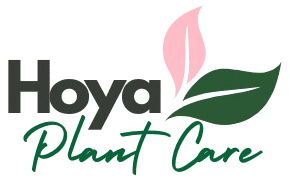Hoya plants, known for their stunning foliage and fragrant blooms, are generally hardy. However, like any houseplant, they can fall victim to various diseases. Common Hoya plant diseases often stem from fungal infections, bacterial issues, or improper care practices. Early identification and proper treatment can save your plant and ensure it continues to thrive. In this guide, we’ll explore the most common diseases affecting Hoyas, how to recognize them, and the best ways to treat and prevent these issues.
Why Do Hoya Plants Get Diseases?
While Hoyas are resilient, they can develop diseases due to environmental stress, poor care routines, or pathogen exposure. Overwatering, high humidity, insufficient air circulation, and contaminated tools or soil can all create conditions that foster disease. Understanding why these problems occur is the first step in keeping your Hoya healthy.
Common Hoya Plant Diseases and Their Symptoms
1. Root Rot
Cause: Overwatering or poorly draining soil.
Symptoms:
- Yellowing leaves.
- Soft, mushy stems or roots.
- Foul odor coming from the soil.
Treatment:
- Stop watering immediately and remove the plant from its pot.
- Trim away any black, rotted roots with sterilized scissors.
- Repot the Hoya in fresh, well-draining soil.
Prevention: Always allow the topsoil to dry out before watering and ensure your pot has proper drainage.
2. Powdery Mildew
Cause: High humidity combined with poor air circulation.
Symptoms:
- White, powdery patches on leaves and stems.
- Leaves may curl, yellow, or drop prematurely.
Treatment:
- Take off any damaged leaves and separate the plant to stop the spread.
- Use a fungicide or spray the plant with a mixture of water and baking soda (1 teaspoon per liter).
Prevention: Place your Hoya in a well-ventilated area and avoid misting its leaves excessively.
3. Sooty Mold
Cause: Sap-sucking pests like aphids, mealybugs, or scale insects excreting honeydew, which promotes mold growth.
Symptoms:
- Black, sooty patches on leaves.
- Sticky residue on the plant’s surface.
Treatment:
- Wipe the plant with a damp cloth to remove mold.
- Treat the pest infestation using neem oil or insecticidal soap.
Prevention: Regularly inspect your plant for pests and clean leaves to prevent honeydew buildup.
4. Leaf Spot
Cause: Fungal or bacterial infections, often due to overwatering or splashing water on leaves.
Symptoms:
- Brown or black spots on leaves.
- Spots may become larger, causing leaf tissue to die.
Treatment:
- Prune affected leaves with sterilized scissors.
- Use a copper-based fungicide to treat bacterial infections.
- For fungal issues, apply a general-purpose fungicide.
Prevention: Water at the base of the plant and avoid wetting the leaves.
5. Botrytis Blight
Cause: A fungal infection caused by damp conditions and decaying organic matter.
Symptoms:
- Grayish mold covering leaves, stems, or flowers.
- Leaves may wilt or drop prematurely.
Treatment:
- Remove infected parts of the plant.
- Improve air circulation around the Hoya.
- Apply a fungicide specifically labeled for botrytis.
Prevention: Avoid overwatering, and promptly remove any fallen leaves or debris from the soil.
How to Prevent Hoya Plant Diseases
Taking care of plants is all about prevention, it’s much more effective than waiting for problems to arise and then trying to fix them.. These simple steps can help reduce the risk of diseases affecting your Hoya:
1. Proper Watering
- Water your Hoya only when the topsoil is dry.
- Use pots with drainage holes to prevent water from pooling at the bottom.
2. Maintain Ideal Humidity
- Keep humidity levels between 40-60%.
- Use a humidity monitor to ensure the environment isn’t too damp.
3. Provide Good Air Circulation
- Position your plant in an area that allows for good air circulation.
- Avoid overcrowding plants to reduce the risk of spreading diseases.
4. Clean Your Tools
- It’s important to clean your pruning tools both before and after you use them to prevent the spread of any harmful pathogens.
5. Inspect Regularly
- Check your plant for signs of pests or disease during routine care.
- Address problems early to prevent them from worsening.
Conclusion
Caring for a Hoya plant involves more than just watering and providing light—it requires vigilance to spot early signs of disease and quick action to treat issues before they worsen. By understanding common Hoya plant diseases, such as root rot, powdery mildew, and leaf spot, you can take the necessary steps to maintain a healthy, thriving plant. Prevention is your best defense, so focus on proper watering, maintaining good air circulation, and regularly inspecting your Hoya for pests or symptoms.
With proper care and attention, your Hoya will reward you with lush growth and possibly even its fragrant, star-shaped flowers. Keep these tips in mind, and your plant will be the envy of houseplant enthusiasts everywhere!
FAQs About Hoya Plant Diseases
Overwatered Hoyas often display yellowing leaves, mushy stems, and signs of root rot. If you notice these symptoms, check the soil for excess moisture and take steps to dry it out or repot the plant.
Yes, pests like aphids and mealybugs can excrete sticky honeydew, leading to issues like sooty mold. They can also weaken the plant, making it more susceptible to diseases.
Copper-based fungicides and sulfur-based fungicides are effective for treating fungal infections on Hoyas. Make sure to adhere to the product guidelines to keep your plant safe and healthy.
Yes, removing diseased leaves helps stop the spread of infection. Always use sterilized scissors or pruning shears to avoid introducing new pathogens.
Yes, you can save a Hoya with root rot by removing the infected roots, repotting in fresh soil, and adjusting your watering habits. Early intervention is key.

